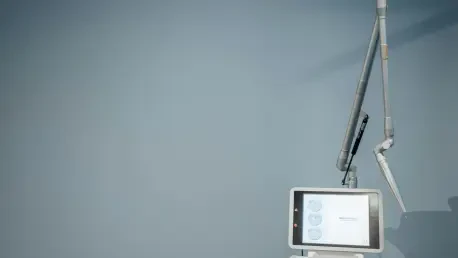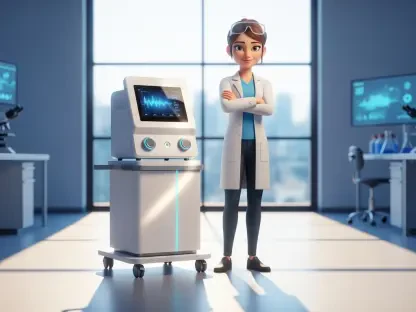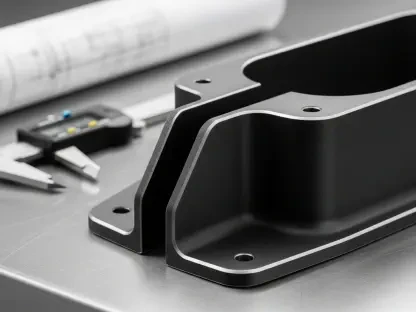Automation is fundamentally reshaping the realm of medical device manufacturing, introducing unprecedented levels of precision, efficiency, and innovation at a time when the industry grapples with escalating demands for intricate devices, stringent regulatory requirements, and complex global supply chain dynamics. With market revenue expected to surpass $9 billion this year and continue expanding through 2035, the influence of cutting-edge technologies such as robotics, Artificial Intelligence (AI), and the Industrial Internet of Things (IIoT) is impossible to overlook. These advancements are not merely tools for cost reduction but are pivotal in meeting the exacting standards of modern healthcare. From enhancing product quality to navigating economic pressures, automation stands as a cornerstone of progress in this highly competitive sector. This article delves into the multifaceted ways these technologies are transforming production processes, ensuring compliance, and redefining what it means to stay ahead in a quality-driven market.
Driving Precision and Innovation in Production
The complexity of modern medical devices, often characterized by miniaturization and intricate designs, demands a level of accuracy that traditional manual processes struggle to achieve. Automation addresses this challenge head-on through the integration of robotics and sensor-driven systems that deliver consistent results across both invasive and non-invasive devices. These technologies minimize human error, ensuring that each component meets precise specifications critical for patient safety and device efficacy. Beyond just maintaining standards, automation fosters innovation by enabling manufacturers to push the boundaries of design and functionality. As a result, companies can develop next-generation products that cater to evolving healthcare needs, positioning themselves as leaders in a fast-paced industry where precision is paramount.
Moreover, the role of automation extends into streamlining production workflows, allowing for rapid prototyping and testing of new device concepts. Advanced systems equipped with real-time feedback loops provide manufacturers with immediate data on performance and potential flaws, significantly shortening development cycles. This capability is invaluable in an era where speed to market can determine competitive advantage. By reducing the time and resources spent on trial and error, automation not only boosts efficiency but also empowers firms to allocate more focus toward research and development. The impact is clear: manufacturers can respond swiftly to emerging trends and patient demands, ensuring that innovation remains at the heart of their operations while maintaining the highest quality standards.
Ensuring Compliance with Rigorous Standards
As global regulatory bodies tighten their oversight of medical device manufacturing, the adoption of automation has become a critical strategy for ensuring compliance. Smart systems integrated with real-time analytics and cloud-based platforms offer manufacturers the ability to maintain repeatable processes that align with strict guidelines. These technologies generate detailed records and provide transparency essential for passing audits and meeting international standards. By automating documentation and quality checks, companies can avoid the pitfalls of human oversight, reducing the risk of non-compliance penalties that could damage reputation and finances. This shift toward automated compliance solutions is proving indispensable in an environment where regulatory scrutiny continues to intensify.
Additionally, automation enhances quality assurance by leveraging tools like machine vision and AI to detect defects at the earliest stages of production. Such systems meticulously analyze components for even the slightest deviations, ensuring that only products meeting the highest standards reach the market. This proactive approach not only safeguards patient well-being but also minimizes the likelihood of costly recalls that can erode consumer trust. Furthermore, the data collected through these automated processes offers insights into potential areas for improvement, enabling continuous refinement of manufacturing practices. In a sector where trust and reliability are non-negotiable, automation serves as a vital ally in upholding the integrity of medical devices and maintaining strong relationships with regulators and end-users alike.
Enhancing Efficiency and Scalability for Market Demands
Efficiency stands as a hallmark of automation’s transformative impact on medical device manufacturing, particularly through the use of reprogrammable platforms that allow for swift adaptation to product variations. In an industry characterized by diverse portfolios and short innovation cycles, the ability to reconfigure production lines quickly is a game-changer. Manufacturers can transition between different device types without extensive downtime, ensuring that they remain agile in responding to market shifts. This flexibility helps maintain a competitive edge, as companies can introduce new products or adjust output levels with minimal disruption, all while preserving the consistency and quality that healthcare providers and patients expect.
Scalability, equally important, is another area where automation delivers significant value, especially as global demand for medical devices continues to rise. Automated systems enable production volumes to be adjusted seamlessly, whether ramping up to meet sudden surges or scaling down during quieter periods, without compromising on precision. This capability is particularly crucial in addressing healthcare challenges across varied markets, from advanced economies to emerging regions with growing needs. By supporting higher output with fewer resources, automation helps manufacturers optimize costs and allocate investments toward innovation and expansion. As a result, companies are better equipped to tackle the increasing complexities of global healthcare demands, ensuring that supply keeps pace with the urgent needs of diverse populations.
Mitigating Supply Chain Disruptions and Economic Challenges
The medical device manufacturing sector has faced significant disruptions due to external economic factors, notably U.S. trade tariffs on imports from regions like China and the European Union. These policies have escalated costs and caused delays in acquiring critical components such as sensors and microelectronics, challenging manufacturers to maintain smooth operations. In response, many are diversifying their supply chains by exploring nearshoring options in areas like Southeast Asia and Latin America or reshoring to domestic facilities. Automation plays a pivotal role in this adaptation, offering solutions that reduce dependency on specific suppliers and mitigate the impact of such disruptions. By enhancing operational resilience, these technologies help ensure that production continues despite geopolitical and economic uncertainties.
Beyond immediate responses, automation supports a broader movement toward digital enablement and supply chain robustness through innovations like digital twins and AI-driven quality control. These tools allow manufacturers to simulate and optimize processes before implementation, identifying potential bottlenecks or vulnerabilities in sourcing strategies. This forward-thinking approach not only addresses current economic pressures but also builds a foundation for long-term stability. As firms invest in regionally distributed networks bolstered by automated systems, they create supply chains that are less susceptible to global shocks. The integration of such technologies underscores a strategic shift toward resilience, ensuring that manufacturers can sustain growth and innovation even in the face of unpredictable external challenges.
Charting the Path Forward with Smart Technologies
Reflecting on the strides made in medical device manufacturing, it’s evident that automation has become a transformative force by addressing critical needs for precision, compliance, and efficiency while navigating complex economic landscapes. Technologies like robotics, AI, and IIoT have already begun to redefine production floors, proving their worth in enhancing quality and reducing errors. The industry’s response to supply chain disruptions, spurred by trade tariffs, showcased how automation serves as a buffer, enabling strategic shifts in sourcing and operations that fortify resilience. These advancements lay a robust groundwork for tackling the sector’s evolving challenges.
Looking ahead, the focus should shift to accelerating the adoption of smart factory principles and Industry 4.0 technologies to further enhance flexibility and predictive capabilities. Manufacturers are encouraged to prioritize investments in scalable, programmable automation solutions that can adapt to niche or low-volume production needs, particularly for smaller firms. Collaboration across the industry to standardize integration practices could ease the transition for legacy systems, while targeted support for emerging markets might unlock new growth avenues. Embracing these steps will ensure that automation continues to drive innovation, equipping the sector to meet future healthcare demands with confidence and agility.









